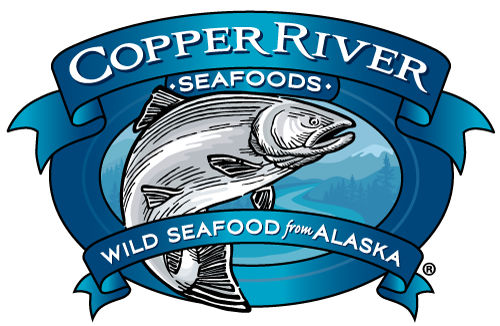Seafood Charcuterie Board

DESCRIPTION
Wild halibut cheeks, king crab legs, spot shrimp and sockeye salmon come together to create an epic seafood charcuterie board! Serve this beautiful seafood platter with your favorite pickled veggies and charcuterie items to create a memorable seafood starter or main course.
INGREDIENTS
Salmon- 1/2 pound wild Alaska sockeye salmon, cut into bite-sized pieces
- 1 tablespoon extra virgin olive oil
- 1/2 teaspoon salt
- 1/2 teaspoon pepper
- 1/2 teaspoon garlic powder
- 1 teaspoon golden monk fruit sweetener (see recipe notes for substitution)
- 2 pounds Alaska king crab legs and claws, trimmed to 4-6 inch pieces
- 1 1/2 pounds halibut cheeks
- 1/2 teaspoon salt
- 1/2 teaspoon pepper
- 1 tablespoon olive oil
- 1 tablespoon butter
- 2 tablespoons capers
- 1 tablespoon fresh lemon juice
- 2 pounds Alaska spot shrimp, deveined and shells removed
- 2 tablespoons olive oil
- 1 teaspoon butter
- 1 shallot, finely chopped
- 1 teaspoon garlic, minced
Seafood Charcuterie Board
Yield: 6-8 servings
Prep time: 30 minutes
Cook time: 30 minutes
INSTRUCTIONS
- Marinate the salmon: In a large bowl, toss the salmon pieces with the olive oil, salt, pepper, garlic powder and monk fruit sweetener. Set it aside to marinate.
- Steam the crab legs: Fill the bottom of a large pot with 1-2 inches of water. Bring it to a boil over high heat, then reduce to medium-high. Set a steamer basket inside and add the crab legs to the steamer basket. Cover and steam the crab legs for 6-7 minutes. Remove and set on a plate, covered with foil to keep warm.
- Pan-fry the halibut cheeks: Pat dry the halibut cheeks with a paper towel. Season with salt and pepper. Heat 1 tablespoon of olive oil in a large skillet over medium heat. Add the butter and capers and cook them for about 1 minute. Place the halibut cheeks in the skillet and cook for 3-4 minutes per side. The halibut is done when it is opaque and firm. Drizzle 1 tablespoon lemon juice to the halibut. Transfer the halibut to a plate and cover with foil. Spoon the remaining butter/caper/lemon juice pan sauces into a separate small bowl.
- Sauté the shrimp: Wipe out the pan with a paper towel. Add 2 tablespoons of olive oil, butter and minced shallot. Sauté for 30 seconds. Add the minced garlic to the pan and cook another 30 seconds. Add the spot shrimp to the skillet and cook about 90 seconds to 2 minutes per side or until the shrimp are opaque. Transfer the shrimp to a small serving bowl and spoon the buttery pan sauce (with garlic and shallots) on top.
- Broil the salmon bites: Preheat the oven broiler. Spread the marinated salmon pieces onto a large baking sheet lined with aluminum foil. Set about 4 inches under the broiler and broil the salmon for 5 minutes. Flip the salmon pieces and return to the broiler for another 4-5 minutes.
- Assemble the seafood board: Assemble all of the cooked seafood on a large serving board. Add the pan sauces and other sauces of choice to the board in small ramekins. Garnish with lots of lemon wedges, fresh parsley/rosemary, and favorite charcuterie items like olives, capers or other pickled vegetables.
NOTES
- You can serve this seafood platter with a few extra pairs of kitchen shears on the side so guests can cut open the crab legs. Or, feel free to remove the crab meat from the legs before assembling the seafood platter.
- It doesn't take long to cook the seafood. For the halibut cheeks and shrimp, they are done when they are firm and opaque. Don't cook them too long or they will quickly turn rubbery. Brown sugar can be substituted for the monk fruit sweetener in the salmon marinade.
- Some halibut cheeks are small, while others can be the size of a hamburger patty. If you have large halibut cheeks, I recommend slicing them into bite-sized pieces before cooking them and make sure to reduce the cook time by half. It is more difficult to get clean cuts from cooked halibut cheeks so cutting them raw is ideal.
- All of the seafood should be thawed completely before cooking
RECIPE AND PHOTO COURTESY OF STEM & SPOON
In this recipe: Wild-Caught Alaska Salmon
Halibut Cheeks
King Crab Legs
Wild Alaska Spot Shrimp
